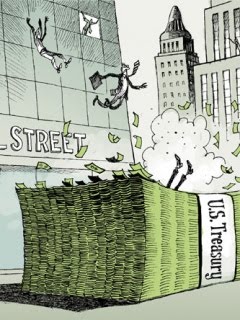BARC 362.30p -11.05p (-2.96%)
CAU 50.50p -0.75p (-1.46%)
CRWN 30.00p 0.00p (0.00%)
FPER 5.00p 0.00p (0.00%)
FCCN 41.00p +3.78p (-3.53%)
GAR 1.75p +0.38p (+27.27%)
ICA 89.5% 0.00p (0.00%)
JKX 270.00p 0.00p (0.00%) - change since purchase on 23/4/2010
LLOY 68.48p +3.78p (+5.84%)
LLPE 59.50p +0.25p (+0.42%)
MAI 152.00p 0.00p (0.00%)
QQ. 133.50p -2.00p (-1.48%)
RBS 55.80p +7.50p (+15.53%)
UNG 3.25p 0.00p (0.00%)
The markets have experienced shockwaves this week - twice. Firstly, the IMF plans to impose a tax on the financial services industry did not go down well. Industry gurus note that this will damage the industry through lower profits and potentially higher costs passed on to the consumer. Since remuneration may be taxed, the quality of talent may fall. This is because persons of outstanding calibre may have no motivation to work for a sector which the pay does not match their attributes and talent. Secondly, Greece's budget deficit got worse by 1% the of 13.6% of GDP. This made the markets nervous until the Greek government asked the EU and the IMF to trigger the rescue package to help the country to tackle the deficit. Other important news is that the UK economic growth slowed to 0.2% in the first quarter.
However, my portfolio has generally performed well despite the turbulence. RBS done well due to rating upgrade from BarCap, rasing it target price from 35p to 70p. LLOY moved in sympathy. Gains for RBS and LLOY are now a massive 76.2% and modest 21.7% respectively. I bought JKX because it is a contrarian stock and it has excellent prospects. My portfolio gain is now about 17.7%.










